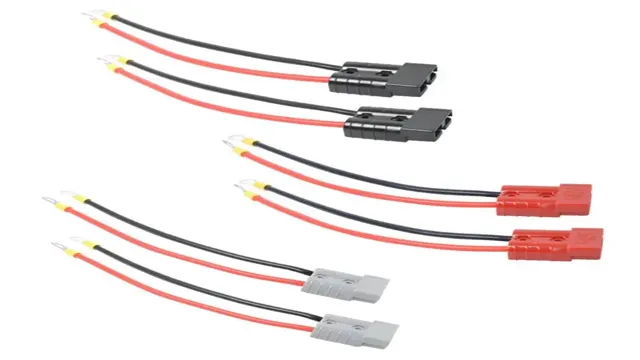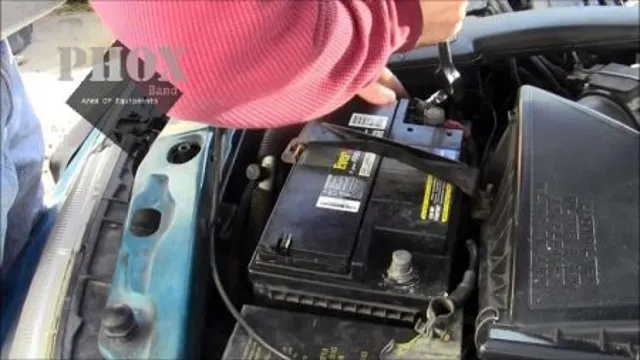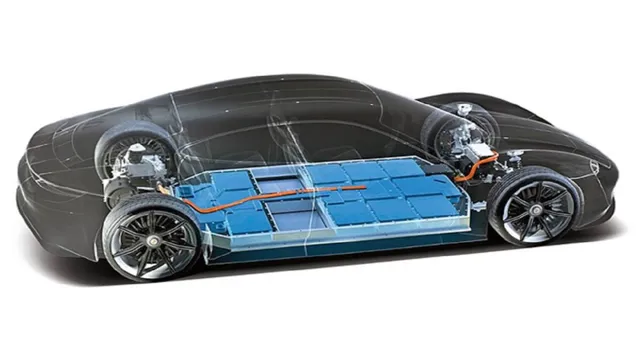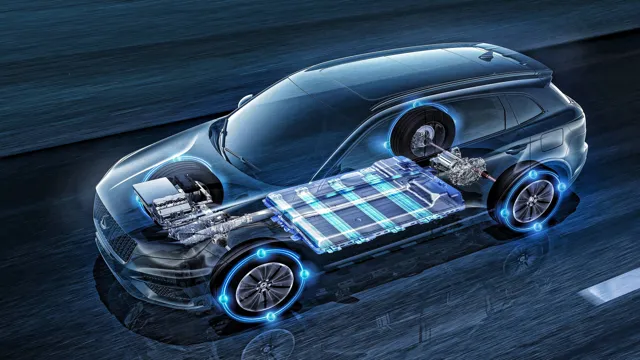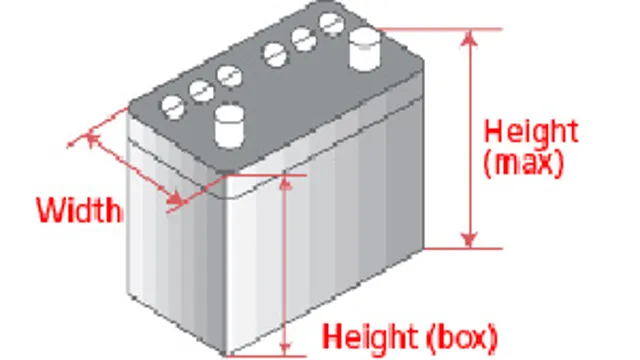Do Electric Car Batteries Really Drain in Cold Weather? Find Out the Truth!
Are you the proud owner of an electric car? If so, one thing you may be wondering about is how its batteries perform in cold weather. It’s no secret that low temperatures can affect the efficiency and range of electric car batteries, but just how much of an impact does it have? Firstly, let’s understand how electric car batteries work. They operate best in a specific temperature range, typically between 20 to 30 degrees Celsius.
So, when exposed to colder temperatures, the battery’s ability to generate and store energy can decrease, resulting in shorter driving ranges and a slower acceleration. The good news is, electric car manufacturers are aware of this and are constantly developing new technologies to address the issue. They’re doing this by improving the battery’s ability to retain heat, which increases its overall efficiency.
Some cars are now equipped with heated seats and steering wheels, which can help keep the cabin warm without relying solely on the battery. It’s also worth noting that driving habits can play a role in how well an electric car performs in cold weather. For instance, if you’re driving in stop-and-go traffic, the battery will have a harder time generating and storing energy, which can decrease its range and performance even further.
So, what’s the bottom line? If you live in an area with cold winters, you’ll need to adjust your expectations regarding the range and efficiency of your electric car batteries. However, new technologies and smart driving habits can help mitigate the effects of cold weather and ensure a more enjoyable driving experience in any condition.
Impact of Cold Weather on Battery Performance
Electric car drivers might notice a drop in battery performance during cold weather conditions. This is because lithium-ion batteries- the most common battery type used by electric vehicles- are sensitive to temperature extremes. When the temperature drops, the battery’s chemical reactions slow down, reducing the battery’s capacity to hold energy and deliver it efficiently to the car’s electric motor.
Additionally, cold weather conditions can also increase parasitic power loss, which drains the battery even when the vehicle is not in use. To counteract the impact of cold weather on battery performance, electric car owners can use tricks like preheating the battery before use, reducing the use of power-hungry features like seat heaters and maximizing battery charging opportunities while the vehicle is parked. Overall, while electric car batteries may drain in cold weather, with adequate precautions, drivers can continue to enjoy smooth and efficient performance during the winter months.
Lower Temperatures Can Reduce Battery Capacity
Cold weather can have a significant impact on battery performance, reducing its capacity and limiting the amount of energy it can hold and deliver. When the temperature drops below freezing, the chemical reactions within the battery slow down, reducing its ability to produce electricity. This means that, even if the battery is fully charged, it may not last as long as it would in warmer weather.
Additionally, cold temperatures can cause the battery to freeze, damaging its internal components and potentially rendering it useless. To prevent these issues, it is essential to store batteries in a warm, dry location and to avoid exposing them to extreme temperatures whenever possible. It’s like how a car engine works better when it’s warm, and if it’s too cold, it may not even start.
Same goes for batteries, they work better when it’s warm and can struggle when temperatures dip too low. So, it’s good to keep this in mind as we move into colder months and to take steps to protect our electronic devices’ batteries from the cold.

Higher Current Demands in Cold Weather
When the temperature drops, the performance of your vehicle’s battery gets affected. Cold weather has a profound impact on the chemical processes that take place inside the battery, which results in a higher demand for current. The lower temperatures increase the internal resistance of the battery, which means that it takes more energy to start your car than it would on a warm day.
In some cases, the battery can lose as much as half of its starting power, making it difficult, if not impossible, to start your vehicle. That is why it is essential to have a battery with a high cold-cranking amp (CCA) rating, which is a measure of the battery’s ability to start an engine in cold conditions. So, if you live in a region that experiences extreme cold weather, invest in a battery with a high CCA rating that can power your vehicle in any weather condition.
How to Mitigate Battery Drain
Electric car batteries can experience a significant drain in cold weather conditions. This is due to a variety of factors, including increased use of the heater, defrost system, and battery temperature management systems. To mitigate this, there are several things you can do.
First, try to park your car in a garage or covered area to keep it out of the elements as much as possible. Second, preheat the car before you drive to warm up the cabin and battery. Third, reduce your use of accessories like the heater and audio system, which can drain the battery quickly.
Finally, make sure your battery is fully charged and consider investing in a battery warmer or insulation cover to help maintain the battery’s temperature. By taking these steps, you can help reduce the chances of battery drain and keep your electric vehicle running smoothly even in cold weather.
Preheating the Battery
To combat battery drain, preheating the battery is a simple but effective solution. When the temperature drops, a car’s battery output decreases, leading to reduced power. To mitigate this, it’s essential to preheat the battery before starting the car in cold weather.
This will help the battery generate its optimal energy output and prevent rapid drain on the battery. You can achieve this by using a battery heater or insulation to keep the battery warm and protected. Think of it like warming up your muscles before starting a workout – the battery needs a little TLC to perform at its best.
By taking this extra step, you can avoid frustrating battery issues and ensure smooth and consistent operation of your car, even in the coldest of temperatures.
Parking in a Garage or Heated Space
If you live in an area where temperatures drop significantly during the winter, parking in a garage or heated space can help mitigate battery drain. When the temperature drops, your car’s battery loses its ability to charge and discharge, which can lead to a dead battery. By parking your vehicle in a garage or heated space, you provide a more stable temperature for your battery, which can prolong its life and reduce the risk of it dying unexpectedly.
One caveat to keep in mind is that just because you’re parking your car in a garage or heated space doesn’t mean you’re immune to battery drain. If your battery is already weak or old, it may struggle to hold a charge regardless of the temperature. It’s a good idea to test your battery periodically and replace it if needed.
Another thing to keep in mind is that if you need to leave your car parked for an extended period of time, it’s a good idea to disconnect the battery to avoid any parasitic drain. Parasitic drain occurs when your car’s electronics continue to draw power from the battery even when the car is turned off, which can drain the battery over time. By disconnecting the battery, you ensure that no power is being drawn, which can help prolong its life.
Overall, parking in a garage or heated space is a good idea if you live in an area with extreme temperatures. Just remember to keep an eye on your battery’s health and take steps to mitigate parasitic drain to ensure that your battery stays healthy and your car starts when you need it to.
Minimizing Use of Battery-Draining Features
Have you ever been caught in a situation where your smartphone’s battery drains quickly due to overuse of certain features? Well, there are ways to mitigate battery drain and prolong the life of your device’s battery. One solution is to minimize the use of battery-draining features. For instance, turning off Bluetooth, Wi-Fi, or GPS when not in use can do wonders for your battery life.
Additionally, reducing the brightness level and shortening the screen’s timeout period can also help in conserving battery power. You can also check the apps running in the background and close the ones you’re not using. By doing these simple steps, you can significantly extend the battery life of your device and avoid being left stranded with a dead battery when you need it the most.
Research on Electric Car Batteries in Cold Weather
The cold weather can have a significant impact on electric car batteries, causing them to drain faster than usual. This is because low temperatures can affect the chemical reactions that occur within the battery, leading to a reduction in their efficiency. Research has shown that at temperatures below freezing, the range of an electric car can be reduced by as much as 40%.
To combat this problem, manufacturers have developed thermal management systems that help to regulate the temperature of the battery, ensuring it remains within the optimum range. Additionally, pre-heating the car before use can help to warm up the battery, reducing the impact of cold weather on its performance. Despite these measures, it is still important to take into account how cold weather can affect the range of an electric car, especially for those who frequently use their vehicles in colder climates.
Study of Battery Performance in Below-Freezing Temperatures
When it comes to electric cars, one of the biggest concerns is how the battery performs in cold weather. Researchers have conducted experiments to determine the effects of freezing temperatures on the battery’s capacity and efficiency. The results have shown that in extremely cold temperatures, the range of an electric car can be significantly reduced.
This is because the chemical reactions that occur in the battery are slower, meaning that the electrons move more slowly through the cell and the capacity of the battery decreases. However, advancements in battery technology have led to the development of batteries that are more tolerant to cold weather conditions, which is encouraging for those who live in colder regions. With a better understanding of how batteries perform in below-freezing temperatures, electric car manufacturers can continue to improve their products and make them more versatile for different climates.
Analysis of Battery Preheating Methods in Cold Weather Driving
As winter approaches, electric car drivers become more concerned about the performance and efficiency of their vehicle’s batteries. Research has shown that cold weather can have a considerable impact on battery life and charging speed. This has led manufacturers to design preheating systems that can warm up the battery before and during driving.
There are various methods of battery preheating, including using the car’s heating system, an external charging station, or a battery thermal management system. Each method has its pros and cons, with some being more effective than others in extreme cold weather. It’s essential for electric car owners to understand the preheating options available for their vehicle and choose the most suitable one for their driving conditions.
By taking proper precautions and utilizing efficient preheating methods, drivers can ensure optimal battery performance and prolong their lifespan during cold weather conditions.
Conclusion
Well, it seems that even electric car batteries can feel the chill of winter. Just like us humans, they prefer to keep warm and cozy. However, with new advancements in technology and the development of specialized heating systems, electric car batteries are becoming more resilient and adaptable to colder climates.
So, next time you’re cruising down the road in your electric vehicle, remember to give your battery a little extra jacket to keep it running smooth and steady, even in the coldest of weather.”
FAQs
How does cold weather affect the battery life of an electric car?
Cold weather can cause electric car batteries to drain faster, resulting in decreased range and performance. Batteries also tend to take longer to charge in cold temperatures.
Can I take any measures to prevent my electric car battery from draining in cold weather?
Yes, you can preheat your car while it is plugged in, use a battery heater, or park your electric car in a garage to protect it from harsh weather conditions.
Is it safe to use an electric car in extreme cold weather?
Yes, electric cars can be used in extreme cold weather, but it is important to follow proper procedures to ensure that the battery stays warm enough to function properly.
How can I extend the battery life of my electric car in cold weather?
You can extend the battery life of your electric car in cold weather by keeping it plugged in as much as possible, using a level 2 charging station, and minimizing the use of energy-intensive features like heated seats and steering wheels.


